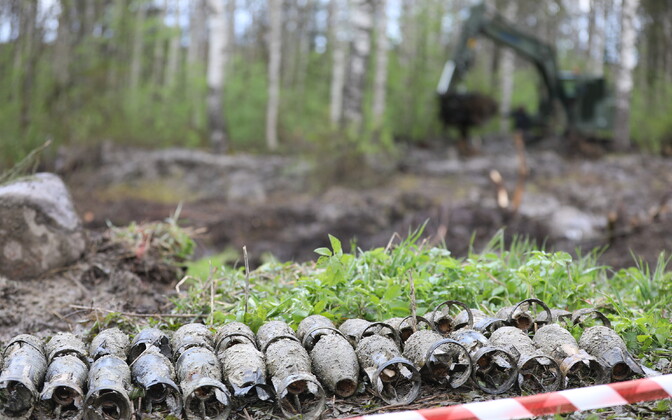10/05/2023 Estonia (Eesti), Järvamaa
“If you ever come across anything suspicious like this item, please do not pick it up, contact your local law and/or enforcement agency for assistance”.
Editor: Mirjam Mäekivi, Helen Wright
Approximately 2,500 unexploded World War II aircraft bombs found in central Estonia were destroyed in a controlled explosion by deminers this week. The ordnance was found in Särvere on land owned by the Järvamaa Vocational Education Center (Järvamaa Kutsehariduskeskus) during a clean-up. Information in the National Archives shows that in 1944 there was a weapons storage facility in almost exactly the same place as the bombs were found. Near here, on the other side of the road, there was a German airfield and after they left, a Russian unit was destroying the aircraft bombs. Last October, during a trial excavation, we found more than 60 explosive devices, in the winter we cleared the vegetation, and this week, with the help of metal detectors and heavy machinery, we were able to make the area safer,” said Sergeant Mario Maripuu from the Defense Forces Demining Center. The area is not used by anyone but the ordnance is still considered to be dangerous. “The clay surface seemed to preserve the aerial bombs which [they] had attempted to destroy here almost 80 years ago. Both the top layer, where you can see for example the factory markings and the year, and the explosives inside the shells, which are still explosive today, are very well preserved,” said Maripuu. The bombs were detonated by 13 specialists at the Defense Forces’ central training ground.
Selleks, et mitte ennast ega teisi ohtu seada, tuleks lõhkekeha leidmise korral kust iganes kahtlast eset mitte puutuda ja helistada hädaabinumbril 112.
Biography of a Bomb
Dear editors, Biography of a bomb is aimed at highlighting the danger caused by unexploded bombs. Moreover, the most important aspect is that we work completely non profit, what drives us is raising awerness about this topic. We make use of your pictures and articles, but we need them to put a context in how findings are done. We trust in your understanding. We will (and we always do) cite the source and the author. We thank you for your comprehension.





